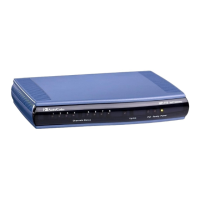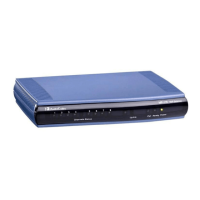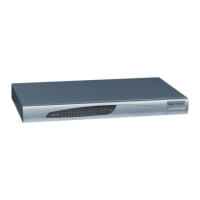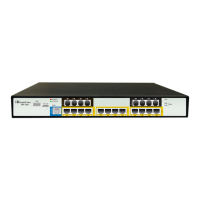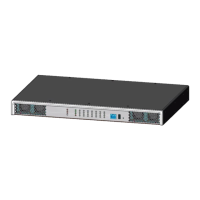SIP User's Manual 84 Document #: LTRT-65415
MediaPack Series
Parameter Description
Gateway IP Address
[StaticRouteTable_Gateway]
The IP address of the router (next hop) to which the packets
are sent if their destination matches the rules in the adjacent
columns.
Note: The Gateway address must be in the same subnet as
the IP address of the interface over which you configure this
static routing rule.
Metric The number of hops needed to get to the specified destination.
Note: The recommended value for this parameter is 1. This
parameter must be set to a number greater than 0 for the
routing rule to be valid. Routing entries with Hop Count equals
0 are local routes set automatically by the device..
Interface
[StaticRouteTable_InterfaceName]
ssociates this routing rule with a network interface. This value
is the index of the network interface as defined in the Multiple
Interface table (see ''Configuring IP Interface Settings'' on
page 78).
Note: The IP address of the 'Gateway IP Address' field must
be in the same subnet as this interface's IP address.
Status Read-only field displaying the status of the static IP route:
"Active" - routing rule is used ny the device
"Inactive" - routing rule is not applied
3.3.2.1.3 Configuring QoS Settings
The 'QoS Settings' page is used for configuring the Layer-2 and Layer-3 Quality of Service
(QoS) parameters. DiffServ is an architecture providing different types or levels of service
for IP traffic. DiffServ (according to RFC 2474), prioritizes certain traffic types based on
their priority, thereby, accomplishing a higher-level QoS at the expense of other traffic
types. By prioritizing packets, DiffServ routers can minimize transmission delays for time-
sensitive packets such as VoIP packets.
This page allows you to assign different VLAN priorities (IEEE 802.1p) and Differentiated
Services (DiffServ) to the supported Class of Service (CoS) - Network, Media Premium,
Control Premium, Gold, and Bronze. For a detailed description of the parameters
appearing on this page, see ''Networking Parameters'' on page 333. For a d
escription on
QoS and the mapping of each application to a class of service, see ''Quality of Service
Parameters'' on page 320.

